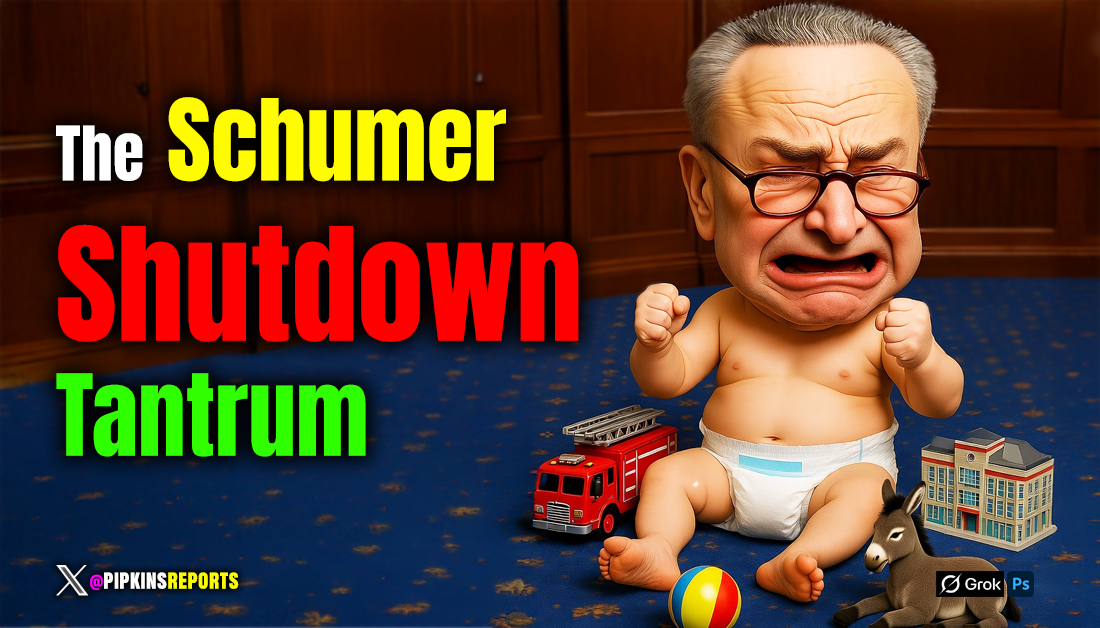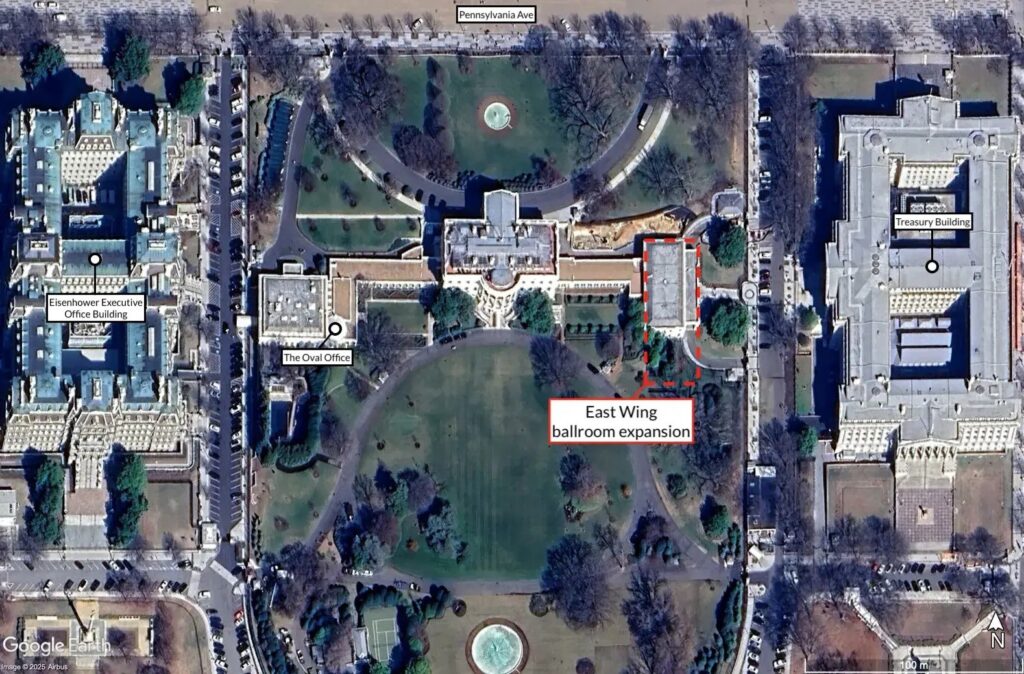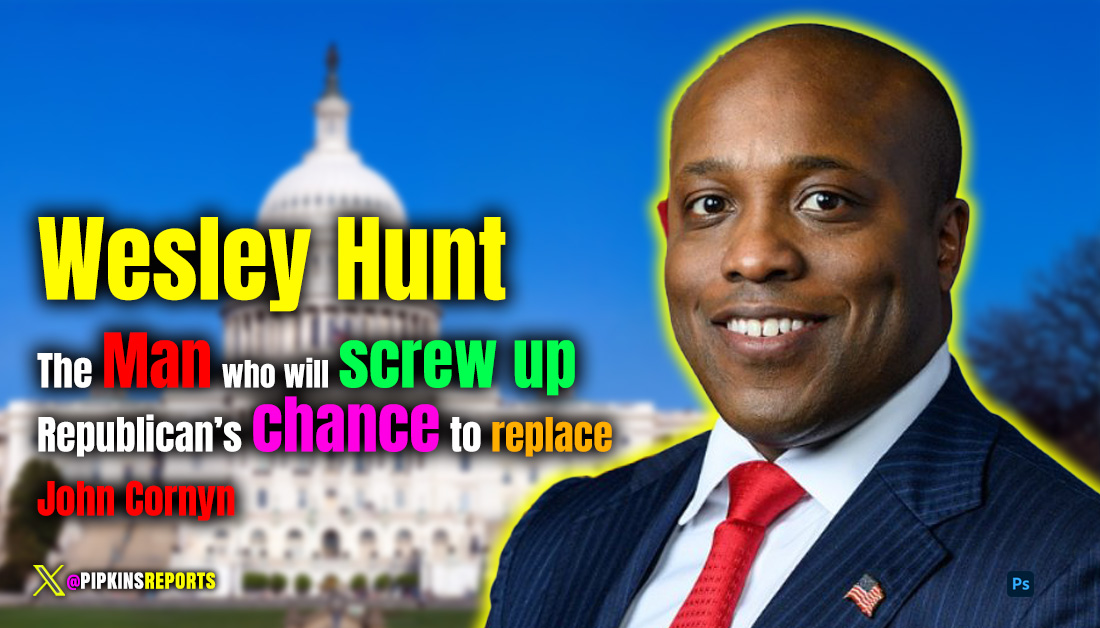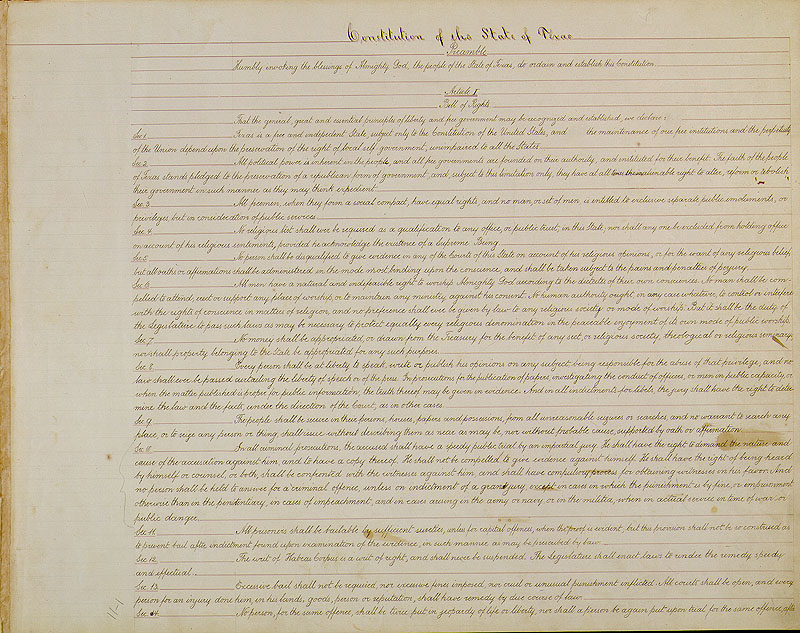
Schumer’s Shutdown Fiasco: Impacts on Texas Residents and Economy
Washington DC – The U.S. government entered a partial shutdown at midnight on October 1, 2025, after Senate Democrats, led by Minority Leader Chuck Schumer, blocked a short-term funding bill proposed by Republicans. The impasse centers on disagreements over extending Affordable Care Act premium tax credits and other healthcare provisions. While Republicans control the White House, Senate, and House of Representatives, at least 10 Democrats are required to pass the legislation through the Senate. The shutdown could affect federal operations nationwide; however, Texas stands to feel significant repercussions due to its large federal workforce and reliance on key programs.
Texas hosts more than 130,000 federal civilian employees, second only to a handful of other states, making it particularly vulnerable to furloughs and delayed pay. Facilities like Joint Base San Antonio and NASA’s Johnson Space Center in Houston will continue essential operations, but many non-essential staff could face unpaid leave. In North Texas, over 100,000 workers may be impacted, potentially straining local economies as families delay bills and reduce spending.
National parks in Texas, which attract about 15 million visitors annually to sites like Big Bend and Guadalupe Mountains National Parks, will see reduced staffing. The National Park Service plans to furlough two-thirds of its employees, leading to limited maintenance, fewer ranger-led programs and potential safety issues on trails. While parks remain open to visitors, local tourism-dependent businesses in West Texas could experience revenue drops if access becomes more challenging.
Veterans’ services, critical for Texas’s 1.7 million veterans—the largest veteran population in the U.S.—face disruptions. The Department of Veterans Affairs will keep hospitals operational, but processing of new disability claims and transition assistance programs may halt. Career counseling and GI Bill payments could be delayed, affecting thousands of transitioning service members and their families.
Agriculture, a cornerstone of the Texas economy, is also at risk. The U.S. Department of Agriculture’s Farm Service Agency will pause new loans and disaster assistance, complicating operations for farmers and ranchers. Inspections at ports like Corpus Christi could slow exports of perishable goods, while border security sees indirect effects: U.S. Customs and Border Protection agents remain on duty, but support roles are furloughed, potentially increasing overtime burdens along the 1,200-mile Texas-Mexico border.
The shutdown stems from Democrats’ insistence on including extensions for ACA subsidies, which support 3.1 million policies, many in states like Texas. Republicans advanced a clean nine-week funding bill, but it failed amid partisan votes. President Trump has indicated openness to negotiations but warned of broader reforms if the stalemate persists. Schumer, in a floor speech, called Republican characterizations of Democratic priorities “inaccurate,” emphasizing the need for bipartisan compromise.
For Texans, immediate effects may include closed passport offices and minor travel delays at major airports like Dallas-Fort Worth. Nutrition programs such as WIC could run out of funds within weeks, impacting low-income families. If the shutdown extends beyond a few days—recalling the 35-day closure in 2018-19—rural hospitals might face funding shortfalls, small businesses near military bases could see reduced patronage, and agricultural markets may weaken further.
State officials are preparing contingency measures, including potential use of Texas emergency funds to support affected areas. As negotiations continue, the duration remains uncertain, but history suggests quick resolutions are possible.
One potential path forward for Republicans to break the deadlock involves invoking the “nuclear option” to alter Senate Rule XXII, the cloture rule that currently requires 60 votes to end debate and proceed to a vote on most legislation, including funding bills.
This maneuver, used previously in 2013 and 2017 to lower thresholds for nominations, would allow the GOP majority to reinterpret the rule via a simple majority vote of 51 senators, effectively eliminating the 60-vote supermajority requirement for cloture on such measures.
The process begins with the Senate majority leader raising a point of order asserting that cloture on the bill in question requires only a majority vote. If the presiding officer—typically the vice president or a senator appointed to the chair—rules against it, the majority appeals the ruling. Senators then vote to overrule the chair, needing just 51 votes to succeed, thereby establishing a new precedent that binds future proceedings.
While this could enable swift passage of a funding measure without Democratic support, it risks escalating partisan tensions and altering the Senate’s tradition of extended debate, potentially inviting reciprocal changes if control shifts in future Congresses.

Featured
National Trust Tries to Bully the President

The National Trust for Historic Preservation (NTHP), a private 501(c)(3) nonprofit, sent a sharply worded “demand” letter to the National Park Service (NPS) on October 21, aiming to halt President Trump’s bold plan to demolish the White House’s East Wing for a grand 90,000-square-foot ballroom addition.
The move, meant to modernize the People’s House for state dinners and global summits, has preservationists clutching their blueprints in horror. But this isn’t about saving history—it’s about a private club flexing muscle it doesn’t have, trying to strong-arm an Executive Branch that answers only to the Constitution and the American people.

Let’s get one thing straight: The NPS, which oversees the White House as a national historic site, isn’t a free-floating bureaucracy taking orders from self-appointed guardians of granite. It’s a cog in the Department of the Interior, a cabinet-level agency nestled firmly within the Executive Branch. Article II of the Constitution vests the President with singular authority to administer the government, meaning the NPS takes its marching orders from 1600 Pennsylvania Avenue, not a donor-funded NGO with a fancy letterhead. The President doesn’t need a permission slip from anyone—least of all a group whose congressional charter from 1949 (Title 54 U.S.C.) grants them zero enforcement power, only a soapbox to “facilitate public participation” in preservation debates.
The White House, battered by time and tight quarters, needs this upgrade. The East Wing, a 1940s wartime add-on, wasn’t built for 21st-century diplomacy. Trump’s team, riding a fresh mandate from 74 million voters, broke ground on October 20 to clear the way for a ballroom that can host world leaders without elbowing ambassadors into the Rose Garden. It’s a practical fix, not a wrecking ball to history. Yet the NTHP, led by President and CEO Carol Quillen, fired off their letter to the NPS, the National Capital Planning Commission (NCPC), and the Commission of Fine Arts, demanding a “pause” until the project undergoes “legally required public review processes.” Their fear? The new wing might “overwhelm” the White House’s aesthetic balance, as if a President’s vision for his own residence needs a focus group’s approval.

This is where the NTHP’s overreach gets laughable. Their charter, signed by Harry Truman, makes them a nonprofit cheerleader for preservation, not a coequal branch of government. They’re a membership organization—think country club for history buffs, bankrolled by corporate sponsors and tax-deductible donations. They partner with the NPS on grants and advocacy, sure, but that’s like a booster club claiming veto power over the coach’s playbook.
The NPS, managing $62 million in Historic Preservation Fund grants for FY25, answers to Congress’s purse and the President’s pen, not Quillen’s pleas. The NCPC and CFA? They’re advisory bodies, not czars. Their input on D.C. federal projects, born from post-WWII urban planning laws, carries weight only as far as the President allows. For the White House itself? That’s executive turf, exempt from the zoning red tape that snarls lesser projects.
Quillen’s letter drips with sanctimonious concern, urging “transparency and broad input from the public.” Translation: Let us, the enlightened few, gatekeep the nation’s heritage. This isn’t advocacy—it’s audacity. The NTHP’s claim to speak for “the American people’s investment” in the White House ignores the 74 million who voted for action, not paralysis. Their cozy ties to the NPS—shared programs, joint field offices—make this less a principled stand than a power play by insiders who think they own the narrative on “historic.” The American Institute of Architects piled on in August, fretting about “scale and balance,” but their opinions, like the NTHP’s, are just that—opinions, not edicts.
Conservatives know this game. It’s the same soft tyranny we’ve seen in Texas, where unelected boards and NGOs try to smother progress with red tape. From Austin’s zoning wars to the Alamo’s restoration fights, we’ve learned that preservation without purpose is just stagnation. The White House isn’t a museum diorama; it’s a living seat of power, meant to project American strength. Trump’s ballroom isn’t defacing history—it’s enabling it to serve the future.
White House officials, unmoved by the posturing, signaled yesterday that demolition continues. “The scope and size of the project has always been subject to vary as the process developed,” a spokesperson said, noting plans would hit the NCPC “at the appropriate time.” In other words: We’re building, and your memo’s been filed under ‘irrelevant.’ (my words) That’s the Executive Branch at work—accountable to the voters, not the vetoes of a nonprofit elite.
This dust-up exposes a deeper rot: the creeping assumption that private groups can check the President’s constitutional power. The NTHP’s letter isn’t just a misstep; it’s a microcosm of the swamp’s obsession with control, where every decision must pass through layers of unelected gatekeepers. Article II doesn’t bend to such nonsense. The President’s authority over his own residence, and the agencies that serve it, is as clear as the Constitution’s parchment.
In Texas, we’ve fought these battles before—against bureaucrats who’d rather embalm our past than let it breathe. The White House deserves the same fierce pragmatism. The NTHP’s demands are confetti in a constitutional storm—pretty, fleeting, and powerless against the will of a President elected to act. Let the jackhammers roar. America’s house is getting a long-overdue upgrade, and no amount of nonprofit noise can stop it.
Featured
New Pentagon Media Access Rules: Balancing Security and Scrutiny in a Military Stronghold

Arlington, VA – The Pentagon has rolled out updated rules for media access this week, effective October 15, 2025. Dubbed Pentagon Facility Alternative Credentials (PFACs), these guidelines replace previous protocols with a structured framework aimed at safeguarding a building that’s as much a nerve center for national defense as it is a hub for public information.
While dozens of journalists from major outlets like The New York Times, CNN, and even Fox News have dramatically turned in their badges in protest—vacating shared workspaces in a symbolic walkout—the changes deserve a measured nod of approval. After all, this isn’t the open-air spectacle of Congress, where elected officials thrive on unscripted drama. The Pentagon is a working military facility, teeming with classified operations and personnel whose daily tasks could tip the scales of global security. Prioritizing leak prevention over a reporter’s dash for an exclusive “scoop” from an undisclosed source isn’t just prudent—it’s essential.
The new rules, outlined in a May 2025 memo and refined through an October 6 update, stem from the Pentagon Force Protection Agency’s (PFPA) need to tighten physical and information controls amid rising threats. At their core, they require media members to complete a “Security Awareness Briefing” and sign an acknowledgment pledging compliance with Department of War (DoW) policies—no small ask, but one that underscores the gravity of the environment. Key provisions include:
- Visible Credentials and Escort Mandates: PFACs must be worn above the waist at all times (except during approved events like briefings), and unescorted access is limited to narrow zones, such as the first-floor food court between Corridors 1 and 10 or specific paths on upper floors (detailed in Appendices C and D). Elsewhere, public affairs escorts are required, ensuring journalists don’t inadvertently wander into sensitive areas.
- Information Safeguards: The briefing explicitly warns against unauthorized disclosure of Classified National Security Information (CNSI) or Controlled Unclassified Information (CUI), with potential revocation for violations under laws like 18 U.S.C. §§ 793 and 952. This isn’t a gag order on reporting—media can still publish anything they learn through proper channels—but it draws a firm line against soliciting or handling non-public materials that could endanger lives or operations.
- Filming and Recording Restrictions: Per 32 CFR 234.15, cameras and recorders are prohibited without at least one week’s advance approval from PFPA or the Assistant Secretary of Defense for Public Affairs. Exceptions abound for official press events, unilateral stand-ups in the Briefing Room, or DoD-monitored interviews, preserving the visual storytelling that defines modern coverage.
These measures aren’t born of paranoia; they’re a direct response to the Pentagon’s unique mandate. Unlike the Capitol, where transparency is baked into democratic oversight, the E-Ring houses strategists plotting responses to cyber threats, missile defenses, and covert ops. A leaked memo or ambushed official spilling beans mid-corridor isn’t just embarrassing—it’s a vector for adversaries. The rules affirm that access is a “privilege subject to the discretion of government officials,” not an unfettered right, aligning with longstanding regs like 32 CFR Part 234.
And crucially, they don’t shutter the doors to journalism: Reporters retain full entree to public briefings, podium announcements, and any declassified info shared via the Office of the Assistant Secretary of Defense for Public Affairs (OATSD(PA)). No story is off-limits; the only taboo is the ambush-style sourcing that turns a secure workspace into a free-for-all.
That said, the framework isn’t flawless, and here’s where reservations creep in:
These rules could inadvertently squeeze independent media, the scrappy underdogs who often deliver the most unvarnished takes on defense matters. Requirements like sponsorship through a U.S. public affairs office and proof of “minimum monthly” visits for renewals (initial three-month PFACs, then six-month probationary periods) favor entrenched outlets with deep pockets and dedicated Pentagon beats.
Freelancers or solo operators—think podcasters dissecting procurement scandals or bloggers tracking drone ethics—might struggle to secure that elusive sponsor or log the requisite face time without institutional backing. Add vague revocation triggers like “unprofessional conduct” or “soliciting non-public info,” and the chilling effect on diverse voices grows. As one defense trade press statement lamented, this risks sidelining “smaller publications specializing in military coverage” at a time when broad scrutiny is vital.
It’s a fair critique, echoed in the en masse badge surrenders: Over 30 outlets, from giants to niche players, opted out rather than ink the pledge, warning of eroded First Amendment ground. Yet even here, the Pentagon’s revisions show flexibility—issuance for existing PFACs extends through October 31, and parking perks like designated “PRESS” spots remain for compliant crews. During emergencies, from pandemics to active threats, access might tighten for all, but that’s workforce protection, not press persecution.
Ultimately, these rules fortify the Pentagon’s dual role: a fortress of secrets and a fountain of facts. By channeling media energy toward structured engagement—escorted interviews, approved footage, and robust briefings—they enhance, rather than hinder, accountable reporting. Independents deserve a carve-out to level the field, perhaps via streamlined sponsorship for verified freelancers. But in a world of hybrid warfare and info ops, national security can’t play second fiddle to the thrill of the scoop.
As the dust settles from this week’s exodus, let’s hope cooler heads prevail. But let us not forget that the press, who have set their own hair on fire over this issue, have reported 90% negative news coverage of the Trump administration and are, without any doubt, hostile to every action taken by this administration. So, a bit of perspective is in order.
** A copy of the entire rules and regulations can be found here:
Pipkins Reports is committed to fair, fact-based coverage of defense and national security. Views expressed are those of the author.
Election
Wesley Hunt Enters Texas Senate Race, Complicating GOP Primary Challenge to Cornyn

Rep. Wesley Hunt’s entry into the 2026 Republican primary for U.S. Senate in Texas introduces a new contender to an already contentious field, potentially dividing the anti-establishment vote and bolstering Sen. John Cornyn’s position despite widespread base frustration with the incumbent.
Hunt, a second-term congressman from Houston’s suburbs, announced his candidacy on Monday, positioning himself as a Trump-aligned conservative ready to take on Cornyn and state Attorney General Ken Paxton.
The move comes after months of speculation and despite pleas from national GOP leaders, including the National Republican Senatorial Committee, to stay in his safe House seat and avoid fracturing the party.
Paxton entered the race in April, framing it as a direct challenge to Cornyn’s leadership within the Senate GOP and instantly became a favorite of the Conservative (anti RINO) wing of the party.
Hunt’s decision adds complexity to a primary that has pitted the party’s populist wing against its institutional core. Conservatives have long criticized Cornyn for his close ties to Mitch McConnell and perceived reluctance to fully embrace former President Trump’s agenda. Paxton, with his record of battling federal overreach on issues like election integrity and border security, has emerged as the base’s preferred alternative. Yet Hunt—himself a vocal Trump supporter—could siphon votes from Paxton, creating a scenario where Cornyn advances on a plurality.
This dynamic raises questions about the race’s origins. While Hunt has cited personal motivations, including family priorities and a desire to address national challenges like the border crisis, his ties to Texas’s GOP establishment merit scrutiny. In 2020, as a candidate in the district once represented by George H.W. Bush, Hunt publicly honored the former president’s birthday on Facebook, praising Bush’s journey “from the Halls of Congress to the Oval Office.“
That district, TX-07, remains a touchstone for the Bush network’s influence in Houston politics, where establishment figures have historically shaped Republican primaries.
Further connections link Hunt to Cornyn directly. The two co-sponsored the Project Safe Childhood Act in April 2023, a bipartisan measure aimed at combating child exploitation—a rare point of collaboration amid broader GOP tensions.
Such alliances, while policy-driven, underscore Hunt’s navigation of both populist and institutional lanes. In a state where Bush-era influencers—consultants, donors, and operatives—still wield significant sway, it’s not implausible that surrogates from this network quietly encouraged Hunt’s bid. Reports indicate Cornyn’s reelection team has been aggressive in defining the field, including efforts to highlight Paxton’s legal vulnerabilities.
A divided primary would align with that strategy, allowing Cornyn to conserve resources while opponents expend energy on each other.
Hunt brings strengths to the race: his military background as a West Point graduate and Army veteran, his appeal as a Black conservative in a diversifying party, and his record of viral advocacy on conservative issues.
He has positioned himself as a bridge between Trump’s base and broader GOP coalitions. But his candidacy is not without vulnerabilities that could blunt his momentum.
Foremost among them is an ethics probe from June 2024, when the Office of Congressional Ethics referred Hunt to the House Ethics Committee for potentially misusing campaign funds on private club memberships totaling over $74,000. The expenditures included dues to a Houston social club and a shooting range, which investigators questioned as personal rather than campaign-related.
Though cleared in December 2024 due to ambiguities in federal rules, the episode fueled accusations of fiscal laxity—ironic for a candidate who campaigns on reining in government spending.
On that front, Hunt has drawn fire from fiscal hawks for supporting multiple continuing resolutions that raised the debt ceiling since entering Congress in 2023. Detractors, including online conservative commentators, have labeled him a “RINO” for these votes, arguing they contradict his pledges to cut waste and align with Trump’s economic vision. His attendance record has also come under scrutiny, with recent reports noting an uptick in missed roll calls as he weighed a Senate run.
Foreign policy stances add another layer. Hunt’s strong support for Israel, including sponsorship of bills like the Antisemitism Awareness Act backed by the American Israel Public Affairs Committee, has earned him plaudits from pro-Israel donors but criticism from those who view it as prioritizing foreign lobbies over domestic concerns.
In Texas, with its sizable Arab-American community, this could prove a liability.
As the primary unfolds—filing deadline in December, early voting in March—polling will clarify the splits. Early indicators suggest Paxton leads among hardline conservatives, but Hunt’s entry could narrow that gap by 20-30 points, per anecdotal assessments from GOP insiders. A fragmented field risks handing Cornyn a narrow victory, much like past Texas primaries where vote division favored incumbents.
For constitutional conservatives seeking a Senate voice uncompromised by Washington habits, this race tests the party’s resolve. Paxton’s prosecutorial edge offers a clear path to reform; Hunt’s polish might dilute it. Whether this is organic ambition or orchestrated disruption, the outcome will shape Texas’s role in a GOP Senate majority—and the broader fight to restore limited government.
* Correction. We removed reference to Mitch McConnell as Minority Leader.

You must be logged in to post a comment Login